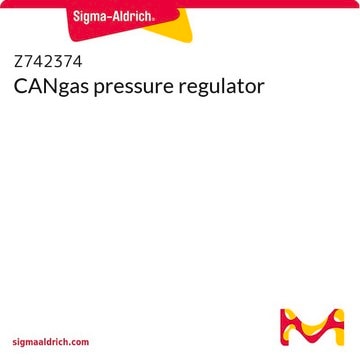295655
Propane
98%
Synonyme(s) :
n-Propane, Propane gas
About This Item
Produits recommandés
Densité de vapeur
1.5 (vs air)
Niveau de qualité
Pression de vapeur
190 psi ( 37.7 °C)
8.42 atm ( 21.1 °C)
Pureté
98%
Température d'inflammation spontanée
842 °F
Limite d'explosivité
9.5 %
Point d'ébullition
-42.1 °C (lit.)
Pf
-188 °C (lit.)
Densité
0.564 g/mL at 20 °C (lit.)
Chaîne SMILES
CCC
InChI
1S/C3H8/c1-3-2/h3H2,1-2H3
Clé InChI
ATUOYWHBWRKTHZ-UHFFFAOYSA-N
Vous recherchez des produits similaires ? Visite Guide de comparaison des produits
Application
- To prepare acrolein, an important raw material for the preparation of acrylic acid.
- To prepare propene through dehydrogenation reaction.
- As an alkylating agent for benzene.
Conditionnement
Compatible with the following:
Informations légales
En option
Raccord cannelé
Régulateur
Souvent commandé avec ce produit
Mention d'avertissement
Danger
Mentions de danger
Conseils de prudence
Classification des risques
Flam. Gas 1A - Press. Gas Liquefied gas
Code de la classe de stockage
2A - Gases
Classe de danger pour l'eau (WGK)
nwg
Point d'éclair (°F)
-155.2 °F - closed cup
Point d'éclair (°C)
-104 °C - closed cup
Équipement de protection individuelle
Eyeshields, Faceshields, Gloves
Certificats d'analyse (COA)
Recherchez un Certificats d'analyse (COA) en saisissant le numéro de lot du produit. Les numéros de lot figurent sur l'étiquette du produit après les mots "Lot" ou "Batch".
Déjà en possession de ce produit ?
Retrouvez la documentation relative aux produits que vous avez récemment achetés dans la Bibliothèque de documents.
Notre équipe de scientifiques dispose d'une expérience dans tous les secteurs de la recherche, notamment en sciences de la vie, science des matériaux, synthèse chimique, chromatographie, analyse et dans de nombreux autres domaines..
Contacter notre Service technique









